Gmelina - Search results
Top Tropicals Plant Encyclopedia
| Number of plants found: 5 |
Botanical name: Gmelina arborea
Common name: Gamhar
Family: Lamiaceae
Origin: Southeastern Asia






Gmelina arborea is native to Southeastern Asia and is traditionally planted for providing shade, for making of bridges, for fuel wood and for timber. It is also often grown as an ornamental tree. This small tree averages 10-20 feet in height and prefers full sun to semi-shade, though will tolerate full shade. It needs regular water but is drought-tolerant once established. Gmelina arborea has beautiful yellow and orange flowers in spring and early summer.
When grown in a pot, Gmelina arborea is a great choice for brightening up the garden. Plant the tree in well-draining, loose soil and be sure to place it in a position that receives full sun or partial shade. It is important to provide your Gmelina arborea with regular watering, especially during the hot summer months. Fertilize the tree with a slow-release fertilizer in order to keep it healthy and flowering.
In colder regions, Gmelina arborea is best grown in pots and brought inside during winter. It is mature cold hardy at least to 30s F for a short time. When winterizing a Gmelina arborea in a pot, make sure to move it to a cool and dark location indoors. Do not let temperatures drop below freezing. Provide the tree with minimal watering during the coldest months, but keep it away from any sources of heat. Once spring arrives, move the tree back indoors and resume regular watering and fertilization.
Gmelina arborea is a beautiful addition to the garden and offers many benefits. It is easy to maintain and its yellow and orange flowers add a splash of color to the garden. It is also an ethnomedical plant and it is used to treat various ailments in SE Asia. With proper care, Gmelina arborea makes a great tree for brightening up your garden.
Botanical names: Gmelina elliptica, Gmelina villosa
Common name: Bulangan
Family: Lamiaceae
Origin: Malaysia





Botanical names: Gmelina macrophylla, Ephialis simplicifolia, Gmelina dalrympleana, Vitex dalrympleana, Vitex macrophylla
Common name: Grey Teak
Family: Lamiaceae
Origin: Australia, New Guinea








Botanical name: Gmelina philippensis
Common names: Hedgehog, Parrot's Beak, Ching-chai
Family: Lamiaceae
Origin: Malaya, Malaysia, India, Philippine Islands










Parrots Beak is a unique round shrub with whimsical pendant branches and leaves and flowers that unmistakably resemble a parrots beak.
The leaves, in their comical way, mimic a parrot doing a joyful handstand. Vibrant and green, they bring smiles effortlessly.
The yellow blossoms are like mini parrot beaks hanging upside-down, creating a perpetual garden carnival all year long.
This charming, low-maintenance, sun-loving plant adds a touch of the tropics and endless whimsy to your garden. It is a butterfly magnet.
Parrots Beak grows fast and is an excellent choice for garden centerpieces or live hedges. It is water-wise and handles dry spells gracefully.
This laid-back plant doesn't demand much, letting you sit back and enjoy the tropical vibes in your garden.
Large yellow pod contains 1 seed. Sow seed in standard potting mix with good drainage. Grow in full light, water freely and feed once a month. Related species - Gmelina Arborea. These are tropical plants, can be deciduous in cooler climates.
Variegated form: Half n Half Parrot's Beak - can be great for Bonsai. Meet a wild twist on a classic favorite! This rare variegated variety of Gmelina philippensis brings all the charm of the traditional Parrots Beak and then some. What makes it special? Its leaves are half green, half creamy-white, creating a striking two-tone effect on every branch. Some call it a conversation starter we call it one-of-a-kind!
- Compact growth and ivy-shaped foliage make it ideal for bonsai. The leaves reduce beautifully with training.
- Fast grower with a naturally tidy canopy.
- Produces eye-catching yellow flowers shaped like parrot beaks, hanging in chain-like racemes.
- Develops character as it ages: spiny branches, textured bark, and an artistic form perfect for styling.
- Tropical and easy-going - loves full sun, moderate water, and warmth.
Note: Gmelina is pronounced "Melina" - the G is silent, but the plant is anything but!
Check out video about Parrots Beak.
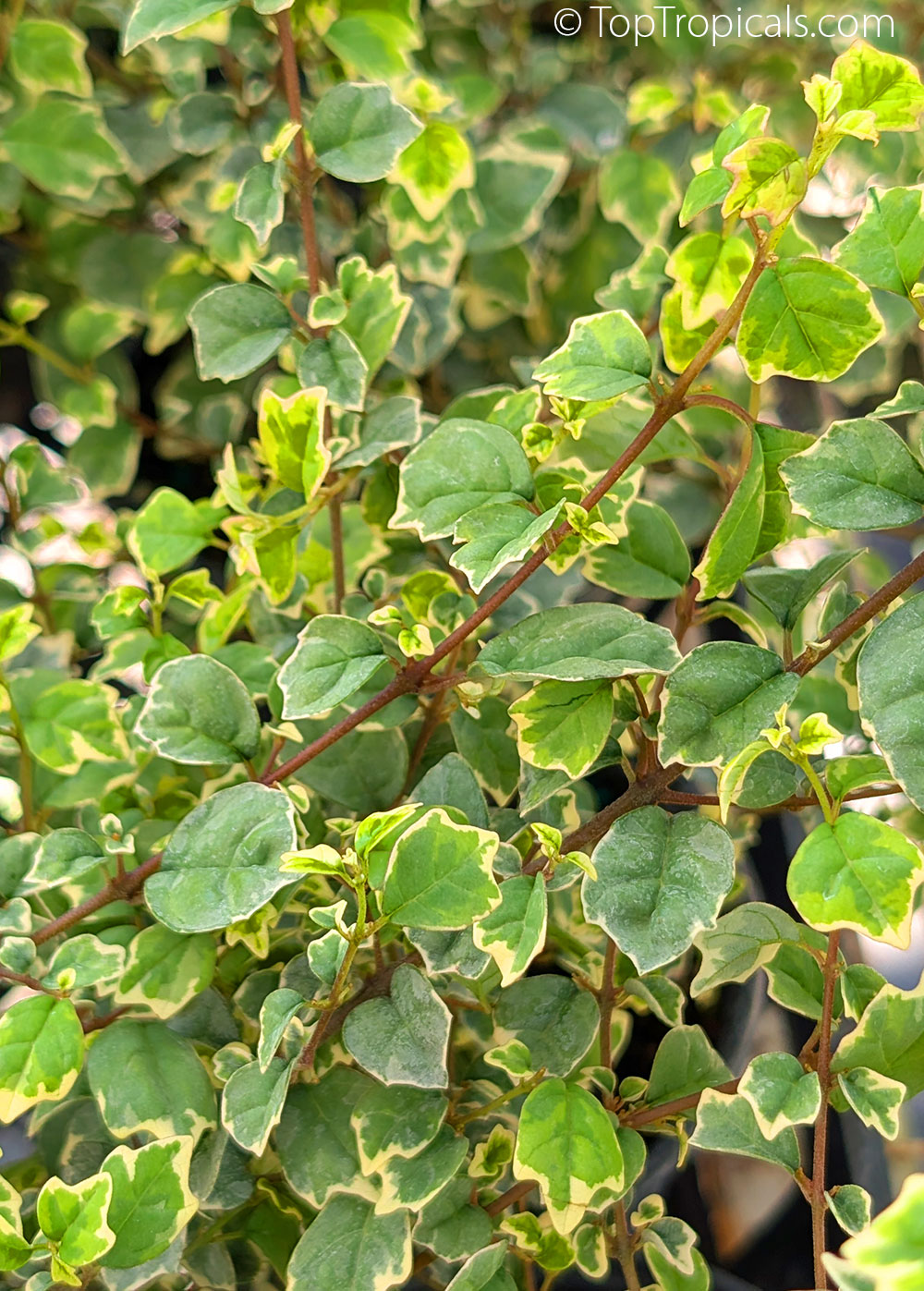
Botanical name: Gmelina philippensis var. variegata
Common names: Variegated Parrot's Beak, Half n Half Parrots Beak
Family: Lamiaceae
Origin: Malaya, Malaysia, India, Philippine Islands
Hardiness: 30°F








A tropical shrub native to Southeast Asia, known for its distinctive yellow flowers resembling a parrot's beak. The variegated form features striking green and creamy-white foliage.
Grows well in full sun to partial shade, prefers well-draining soil and moderate watering. Allow the top layer of soil to dry out between waterings, ensuring the soil remains moist but not soggy. Overwatering can lead to root rot, so it's important to avoid keeping the soil consistently wet. This plant prefers well-draining soil and benefits from occasional misting, especially in dry conditions.
Suitable for tropical gardens and bonsai.
Evergreen to semi-deciduous in cooler or dry conditions.
Nothing found
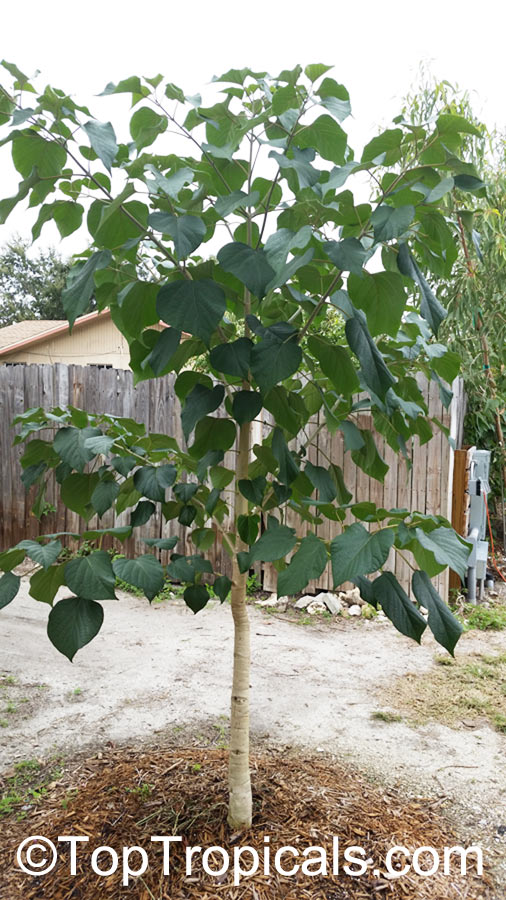
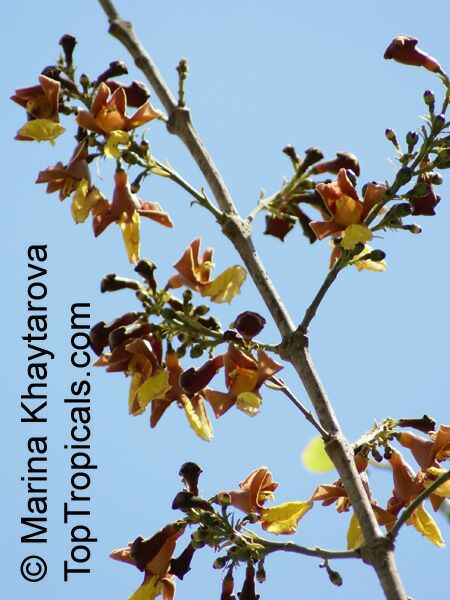
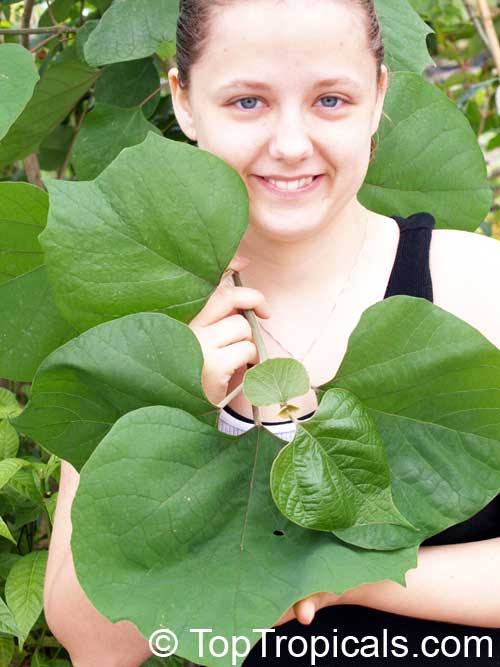
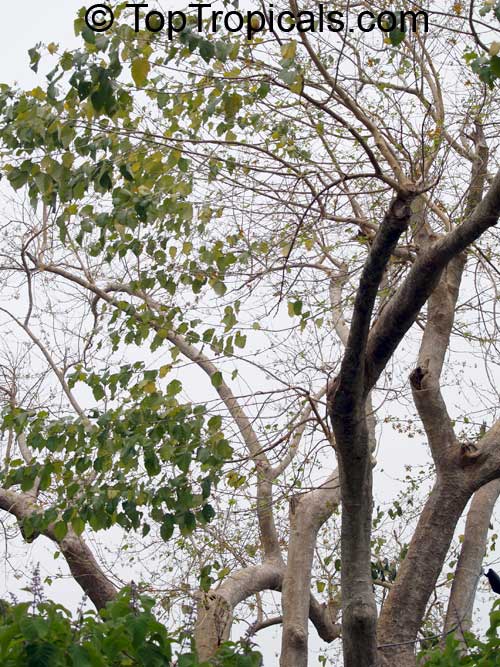
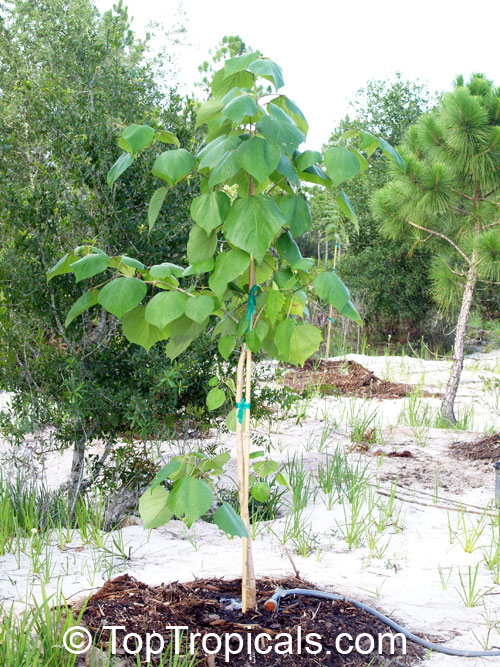
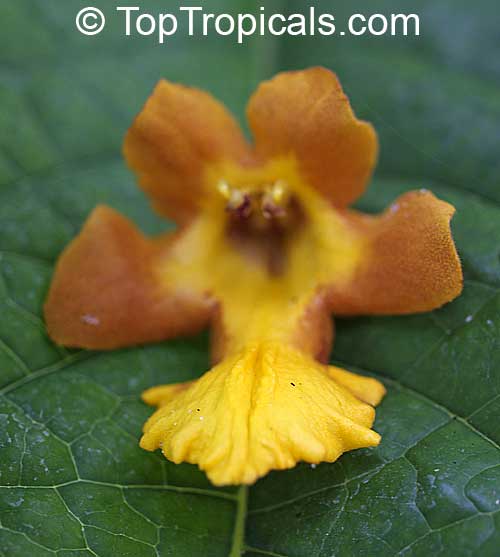
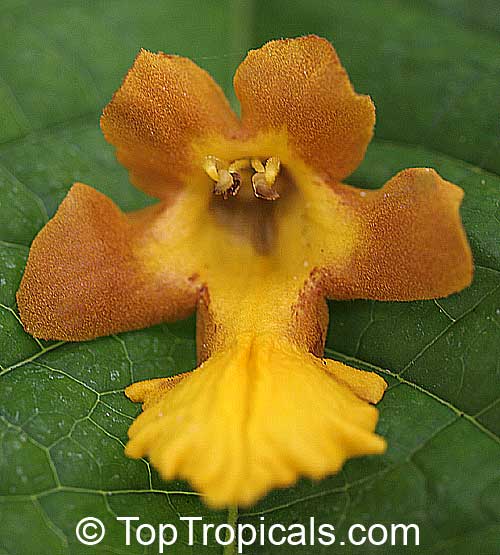
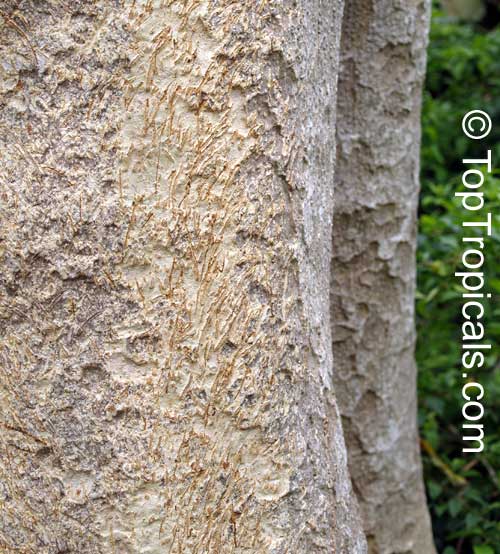
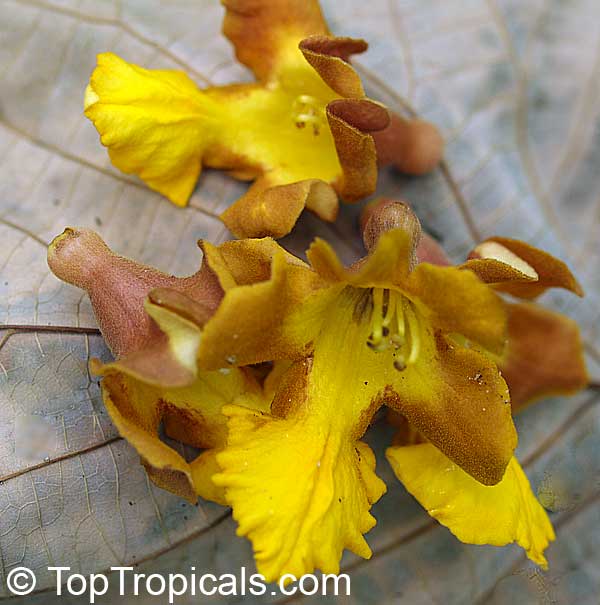
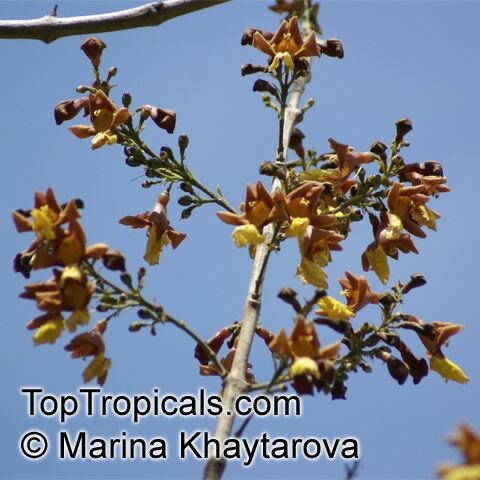
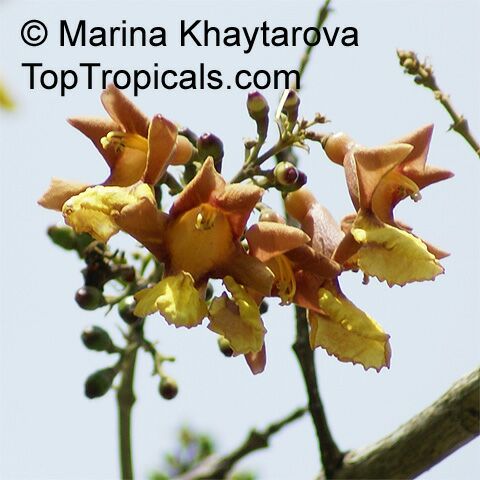
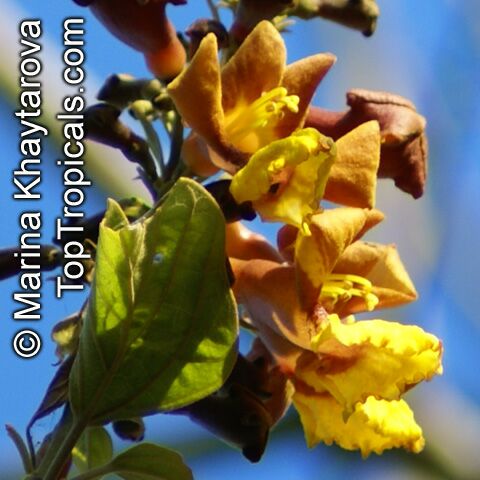
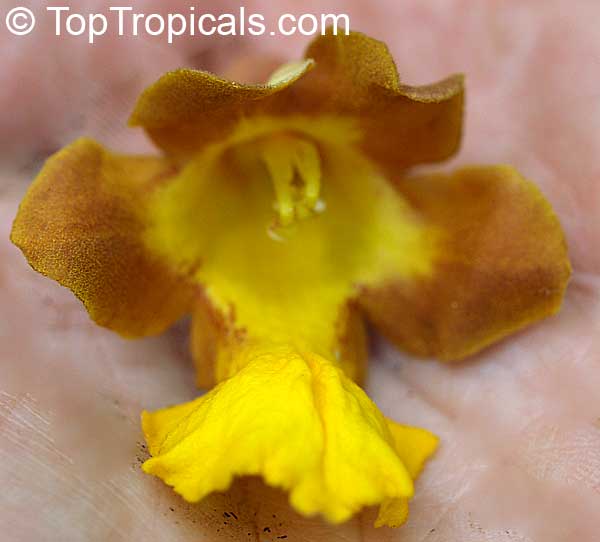
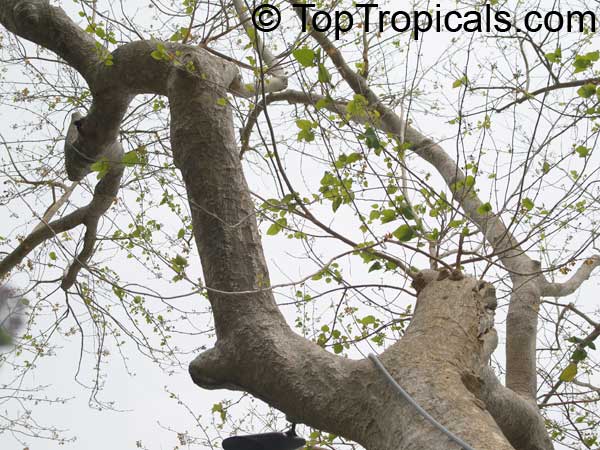
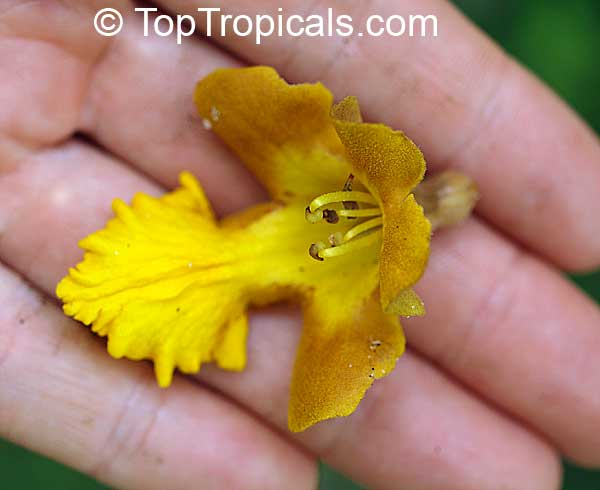
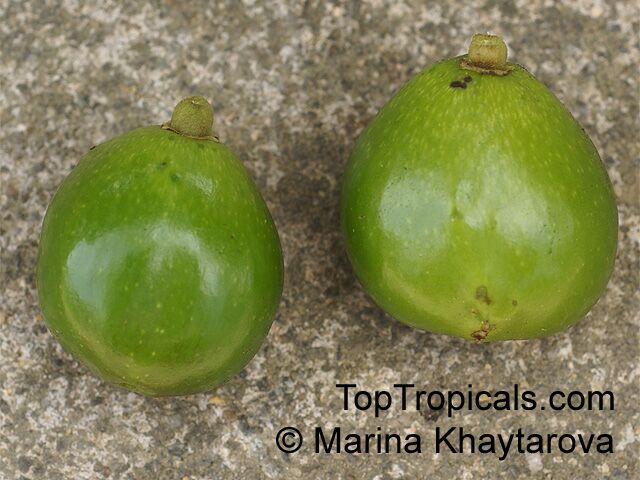
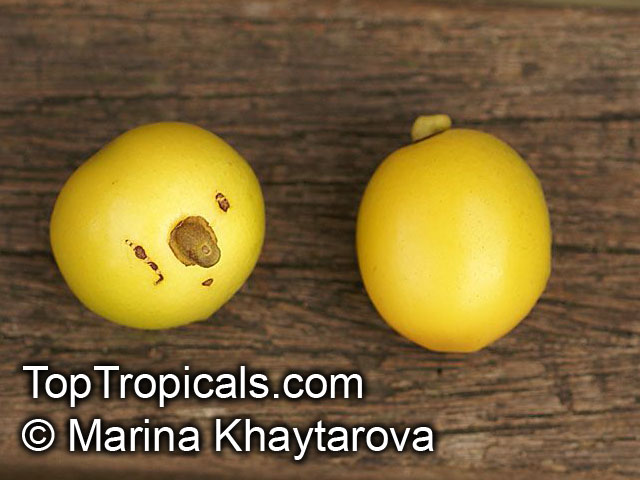
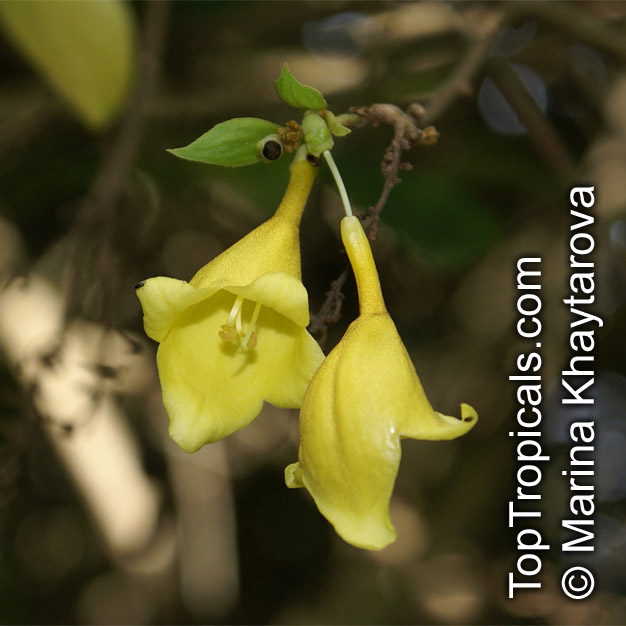
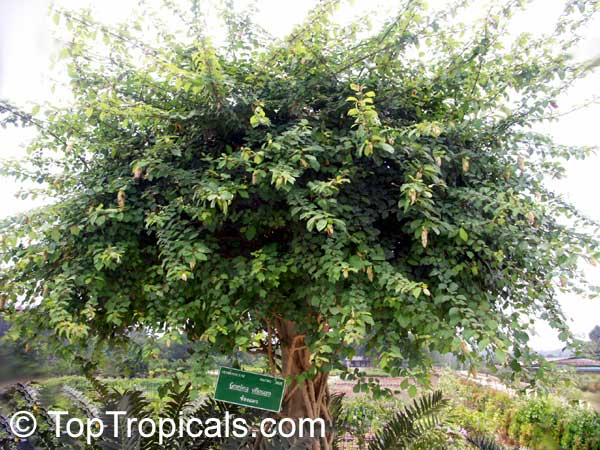
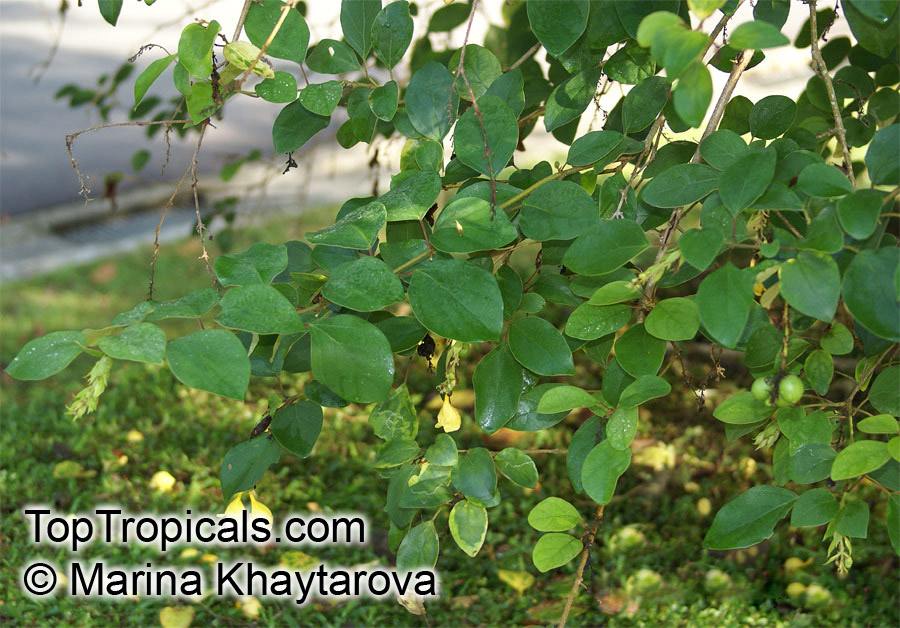
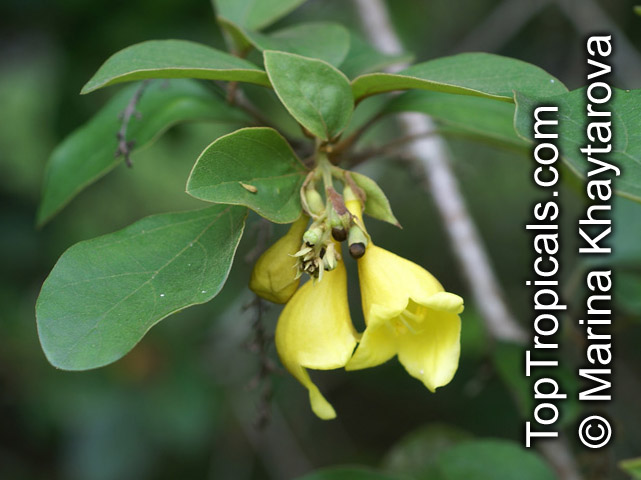
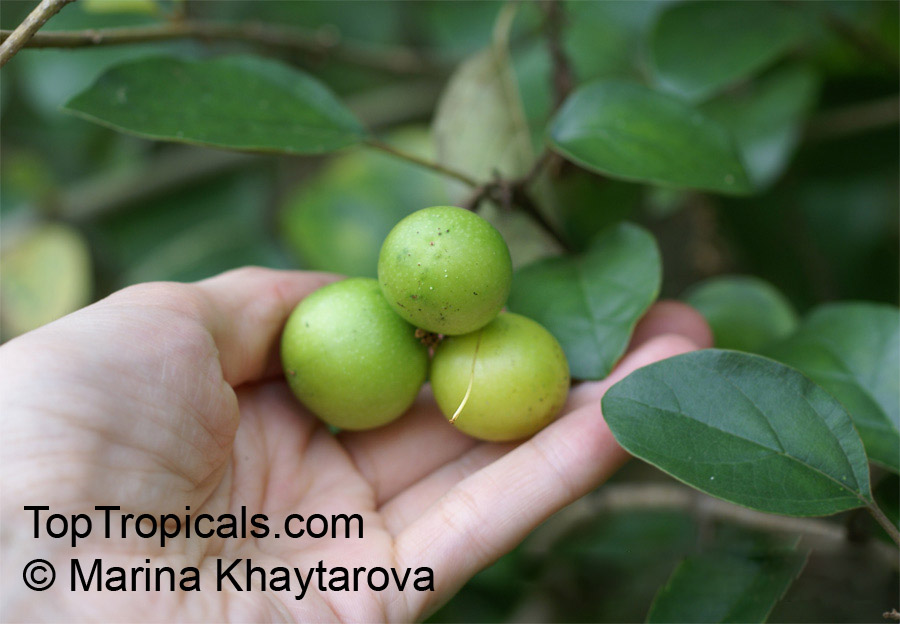
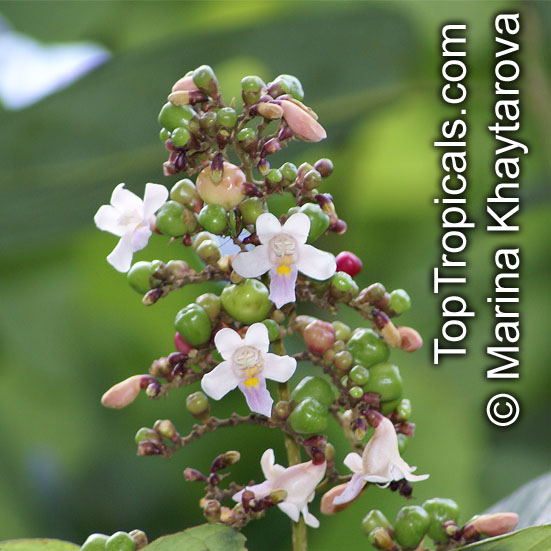
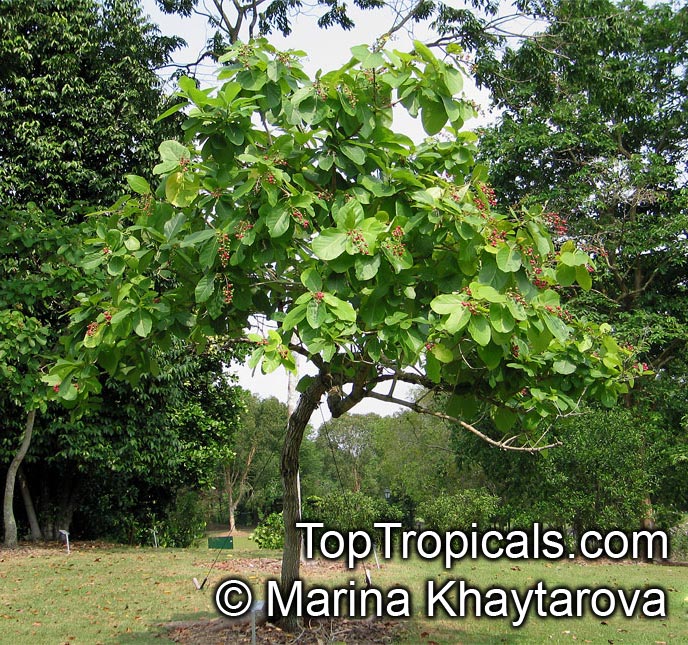
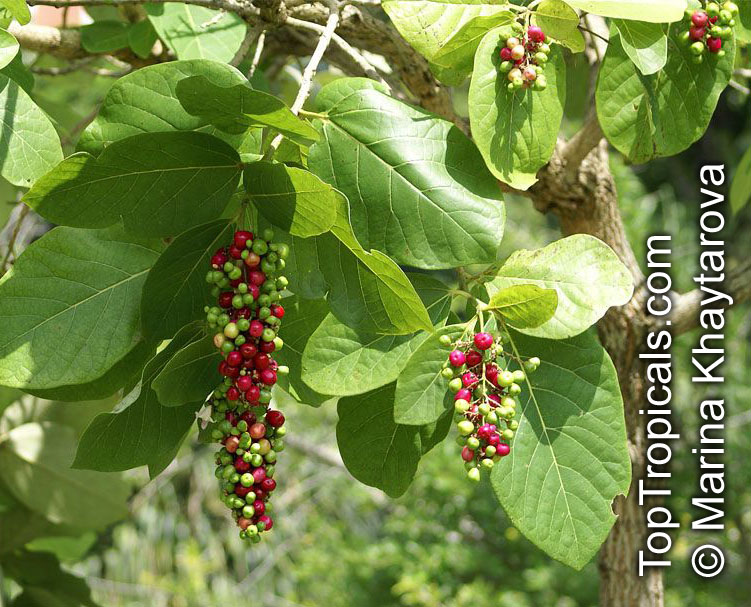
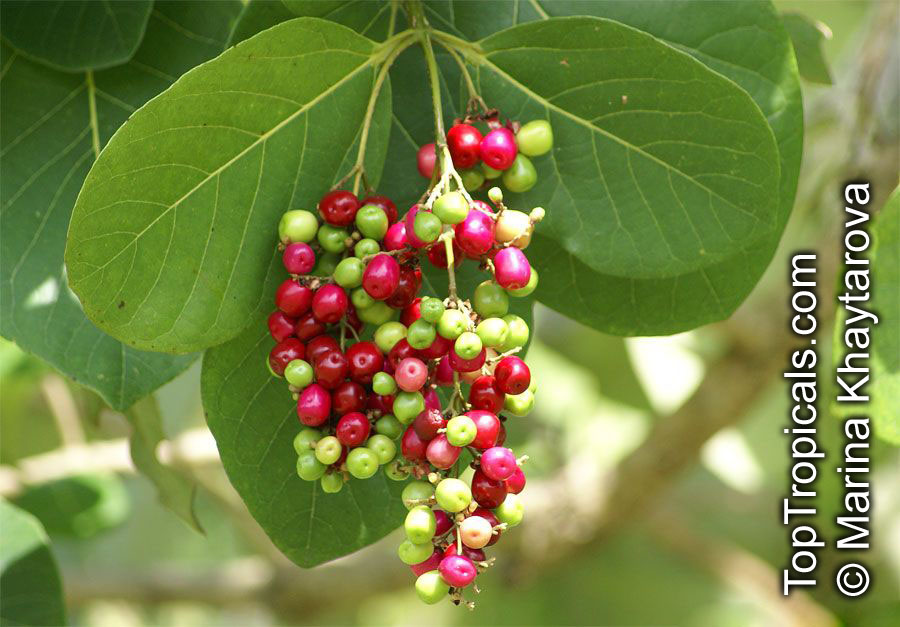
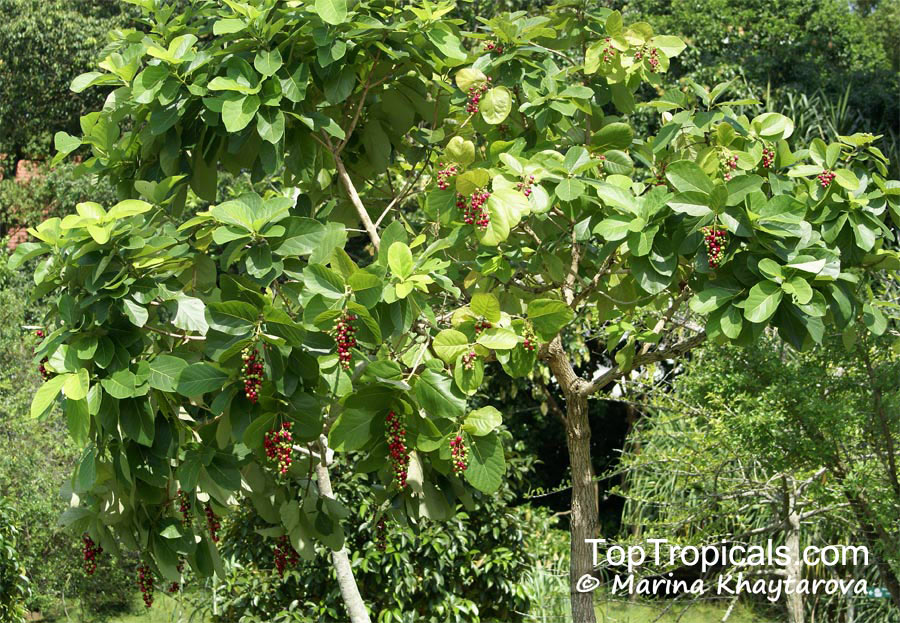
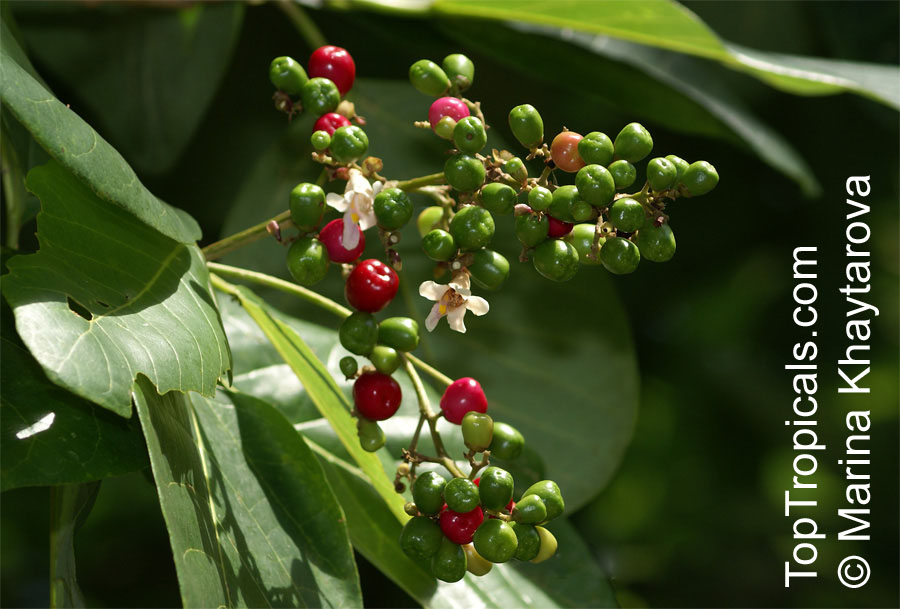
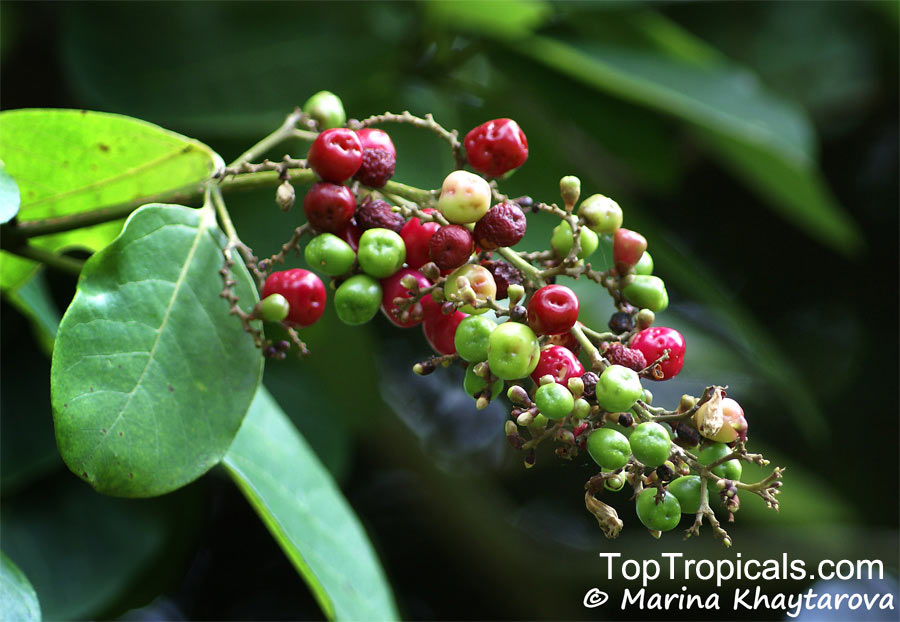
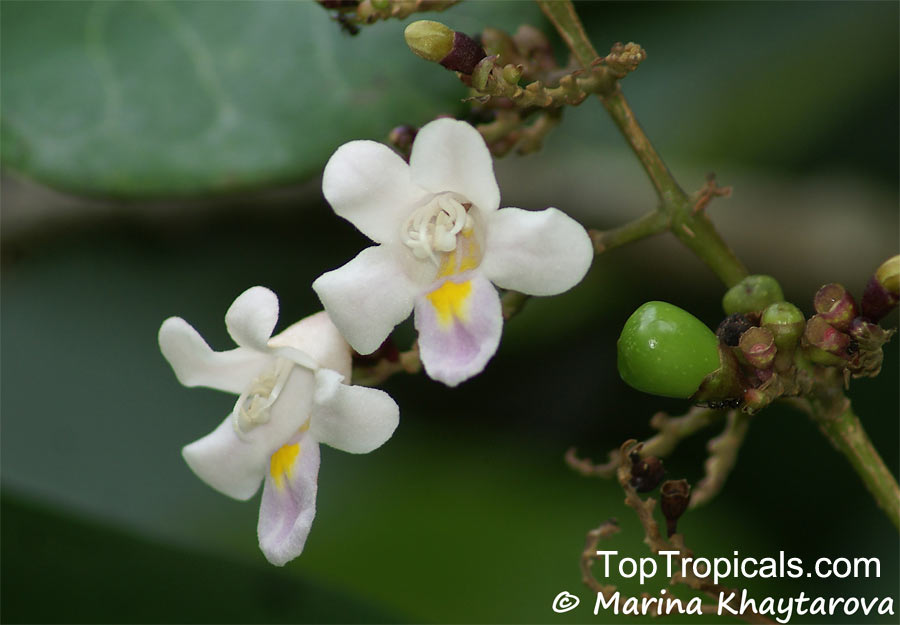
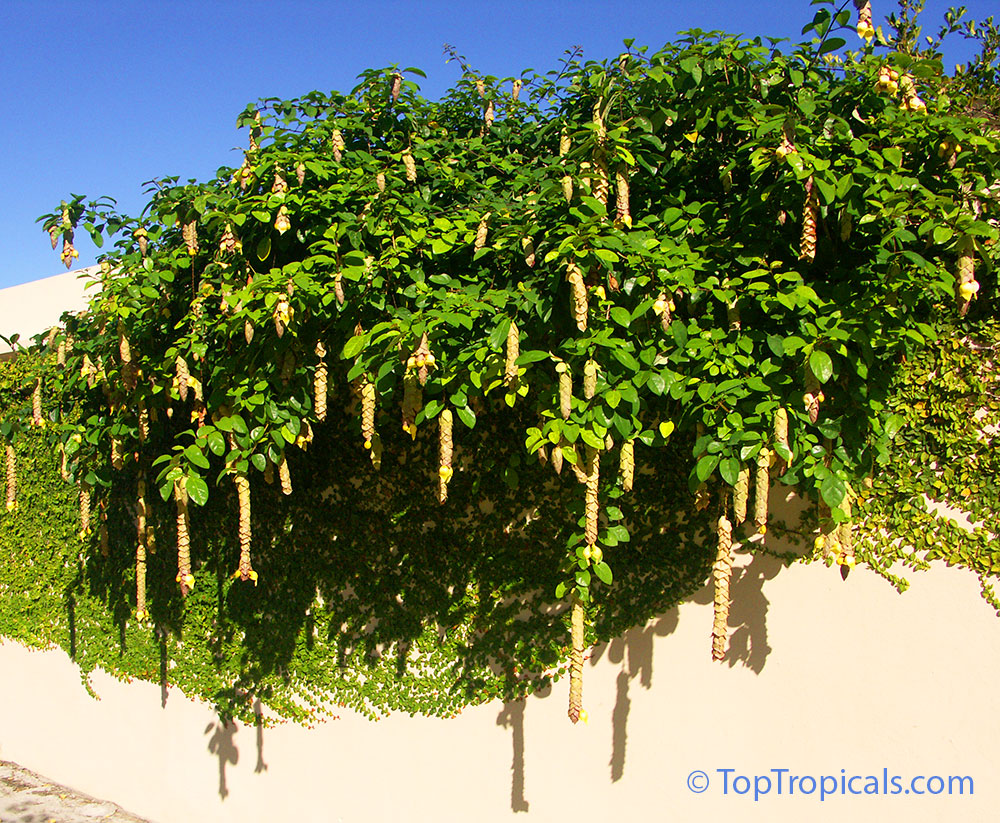
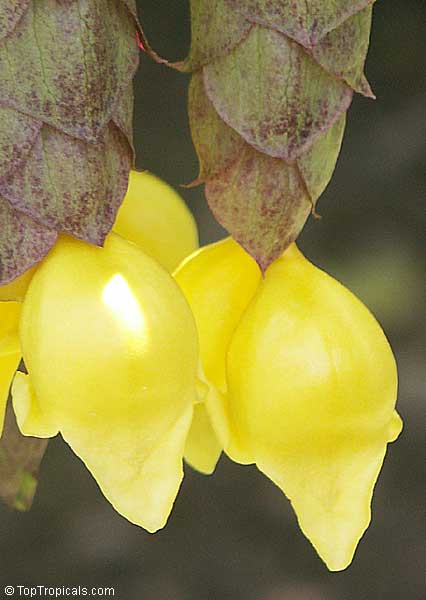
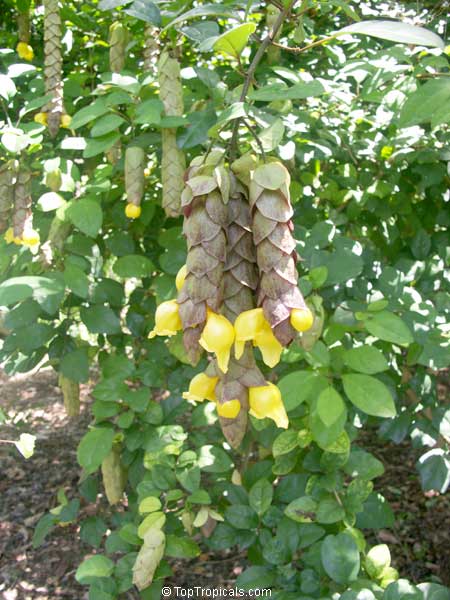
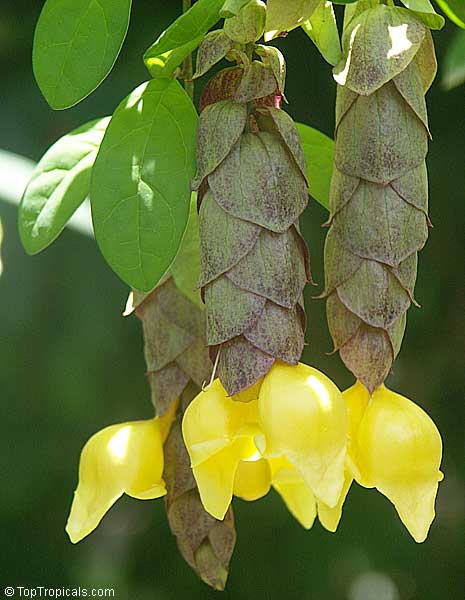

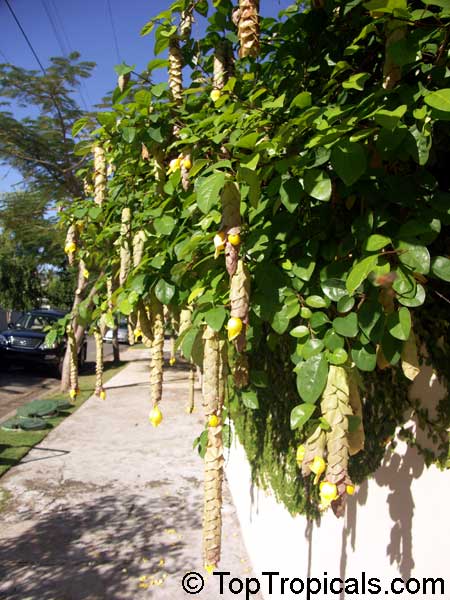
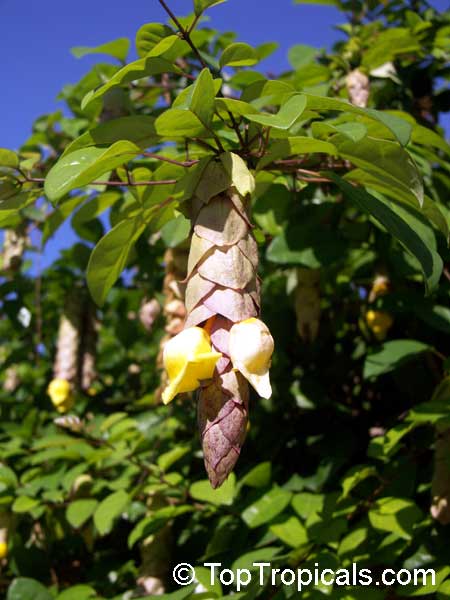
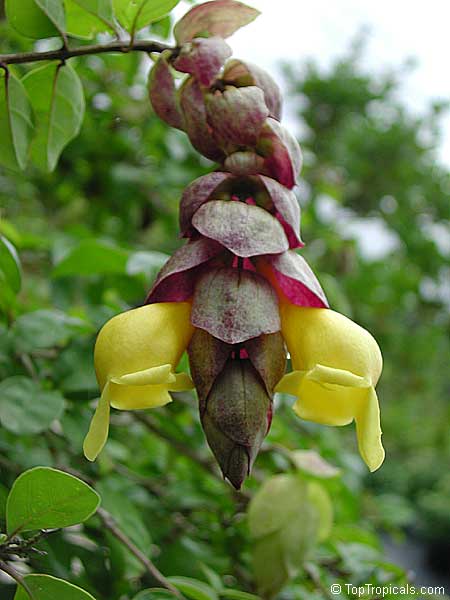
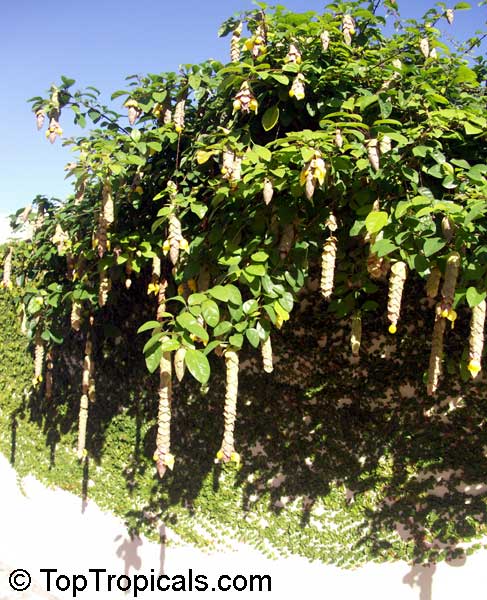
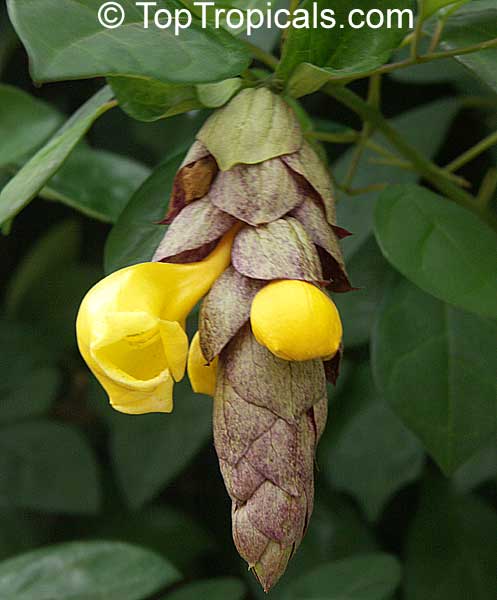
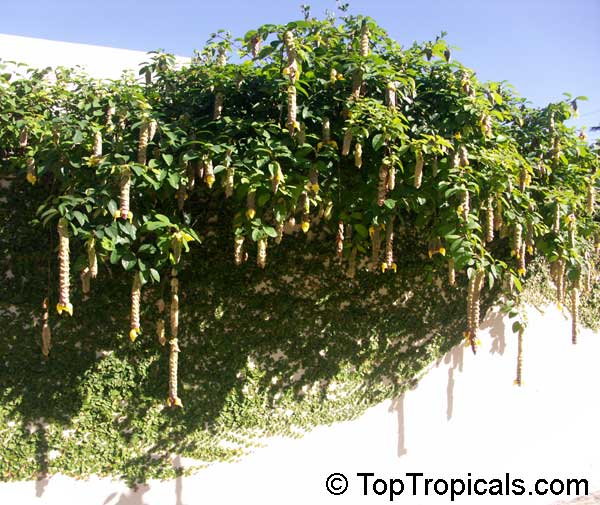
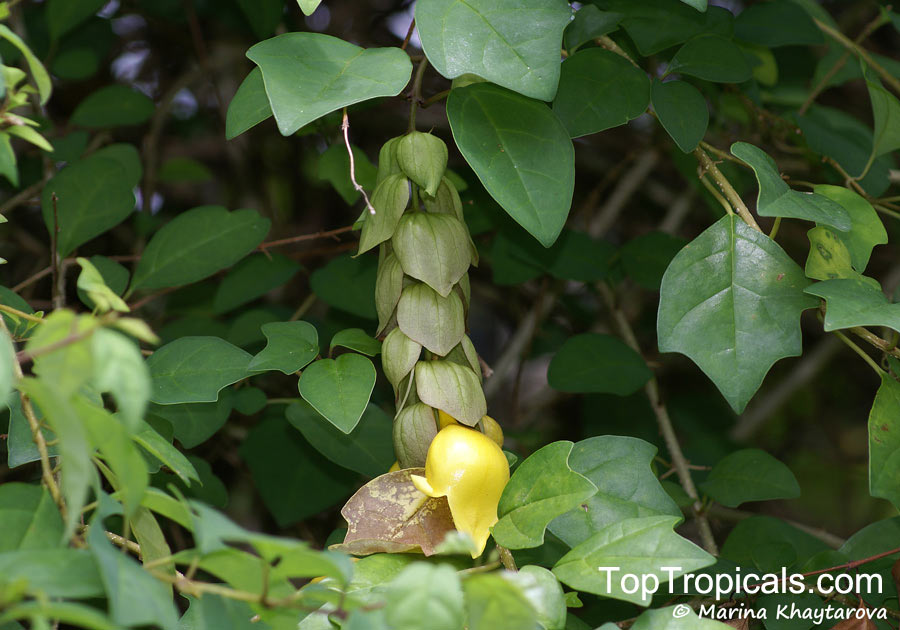
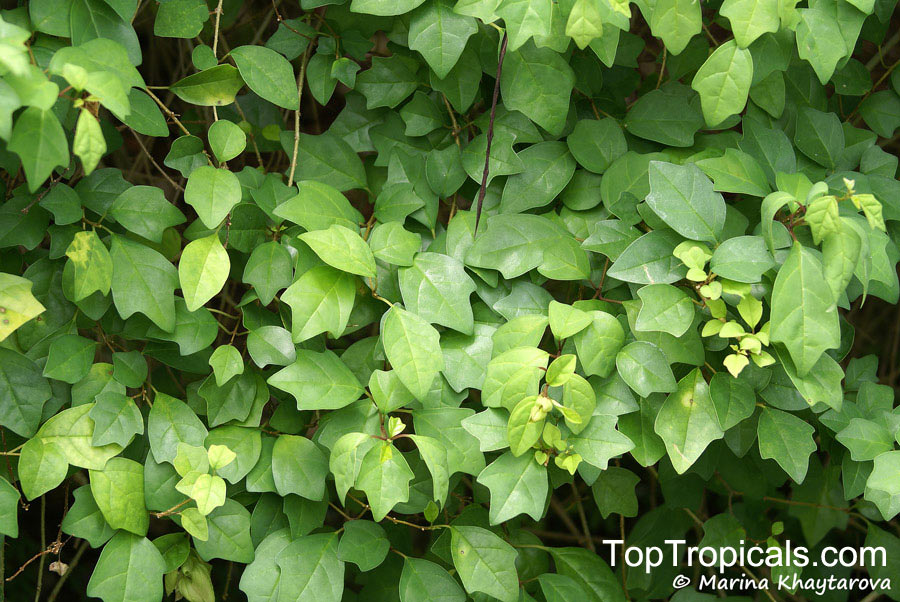
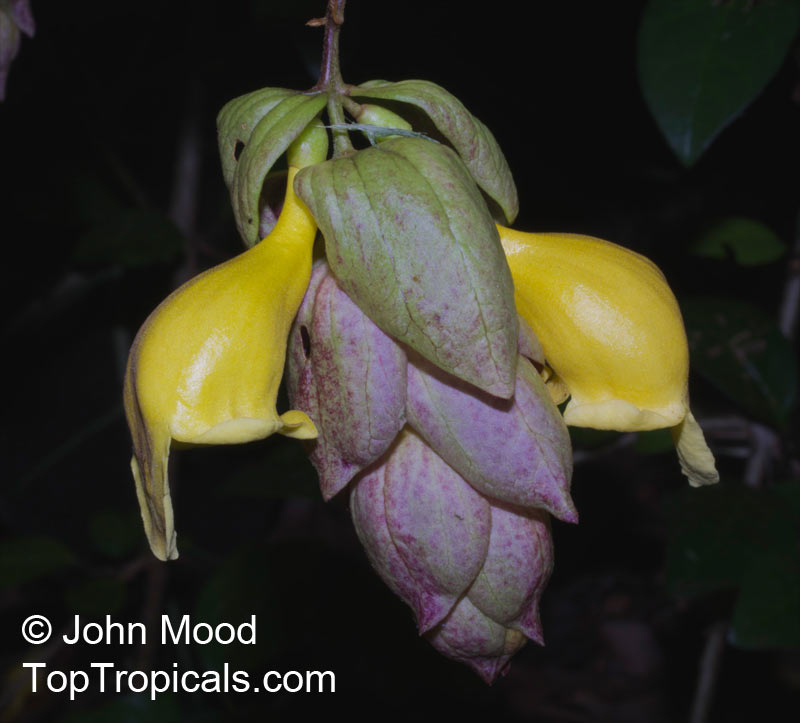
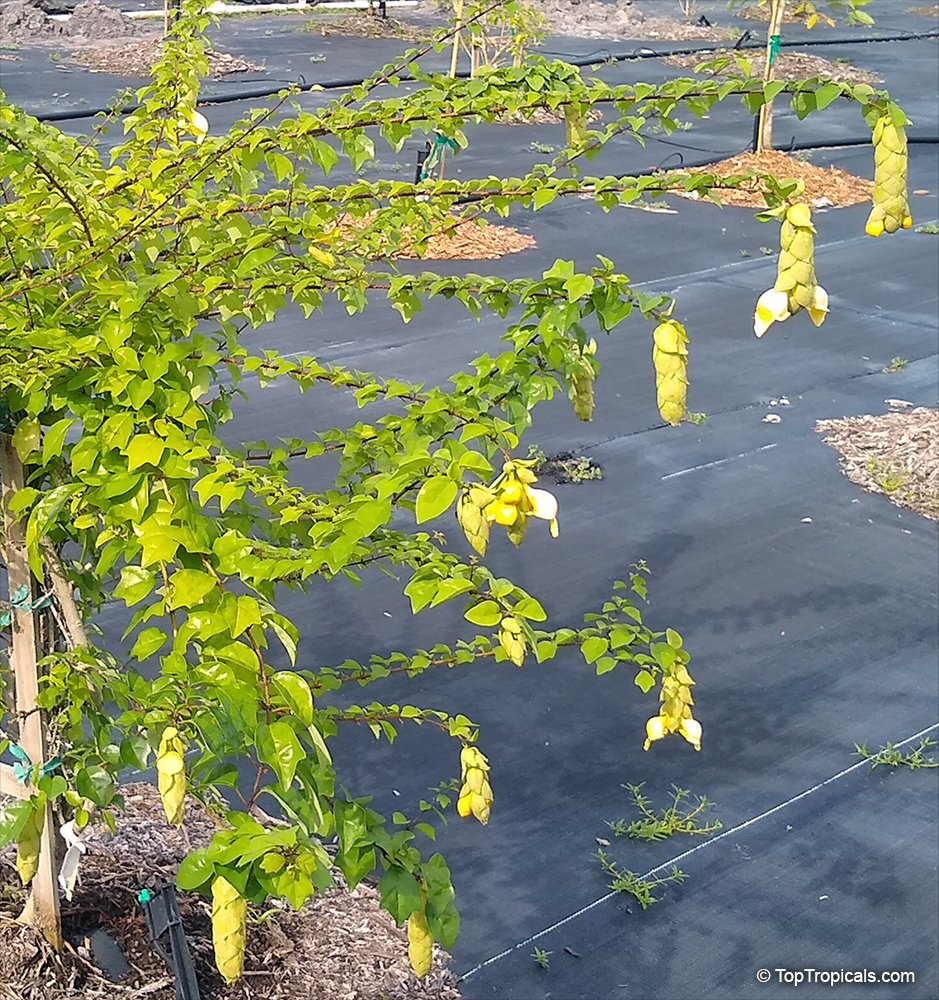
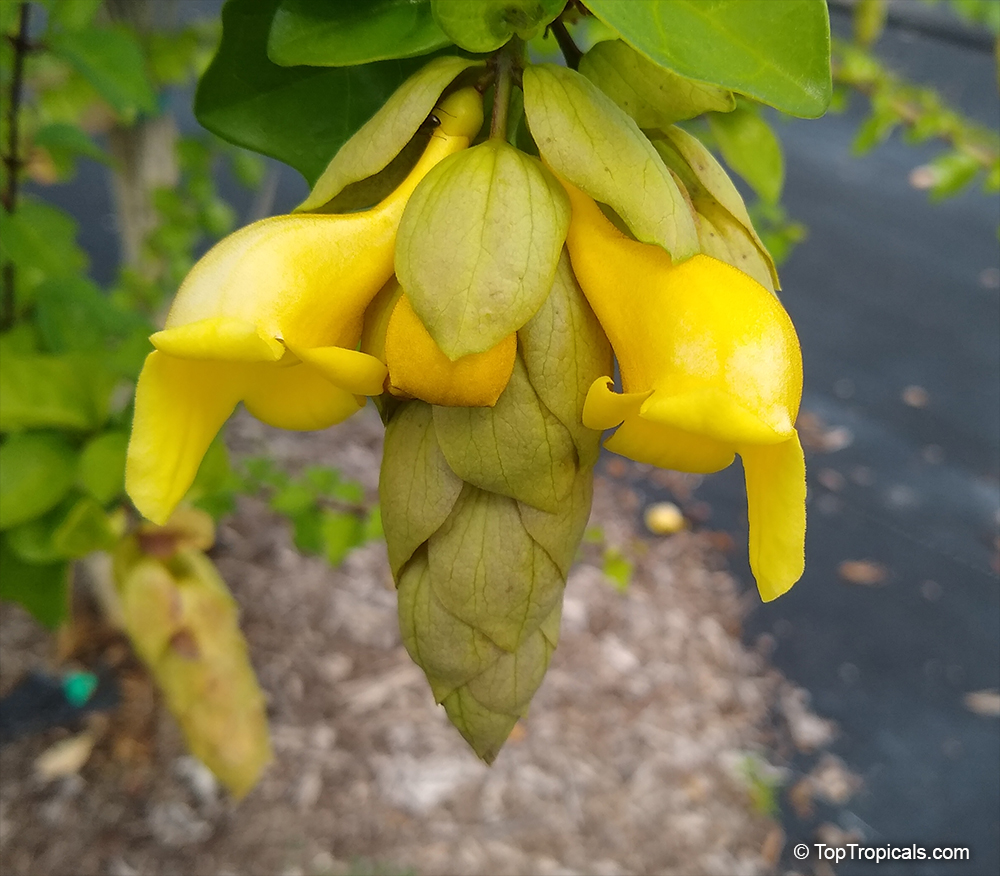
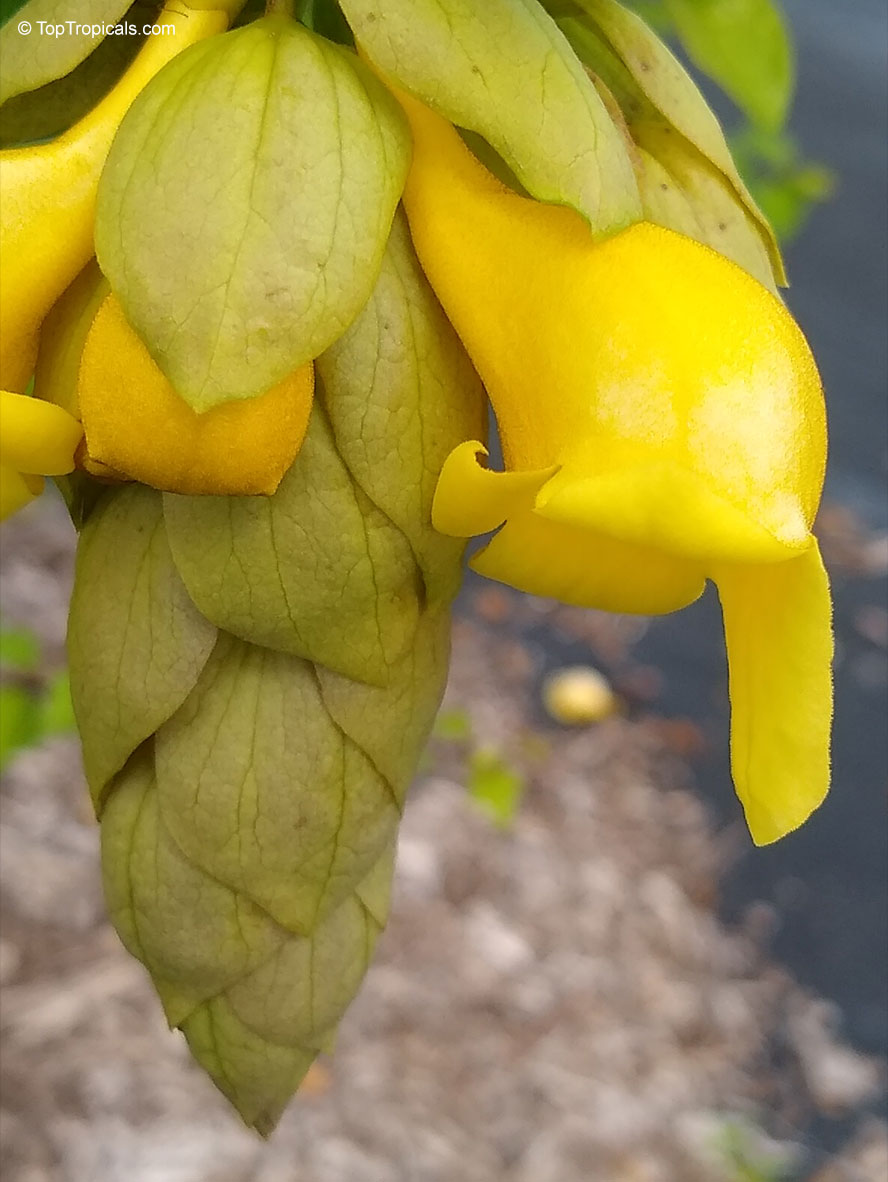
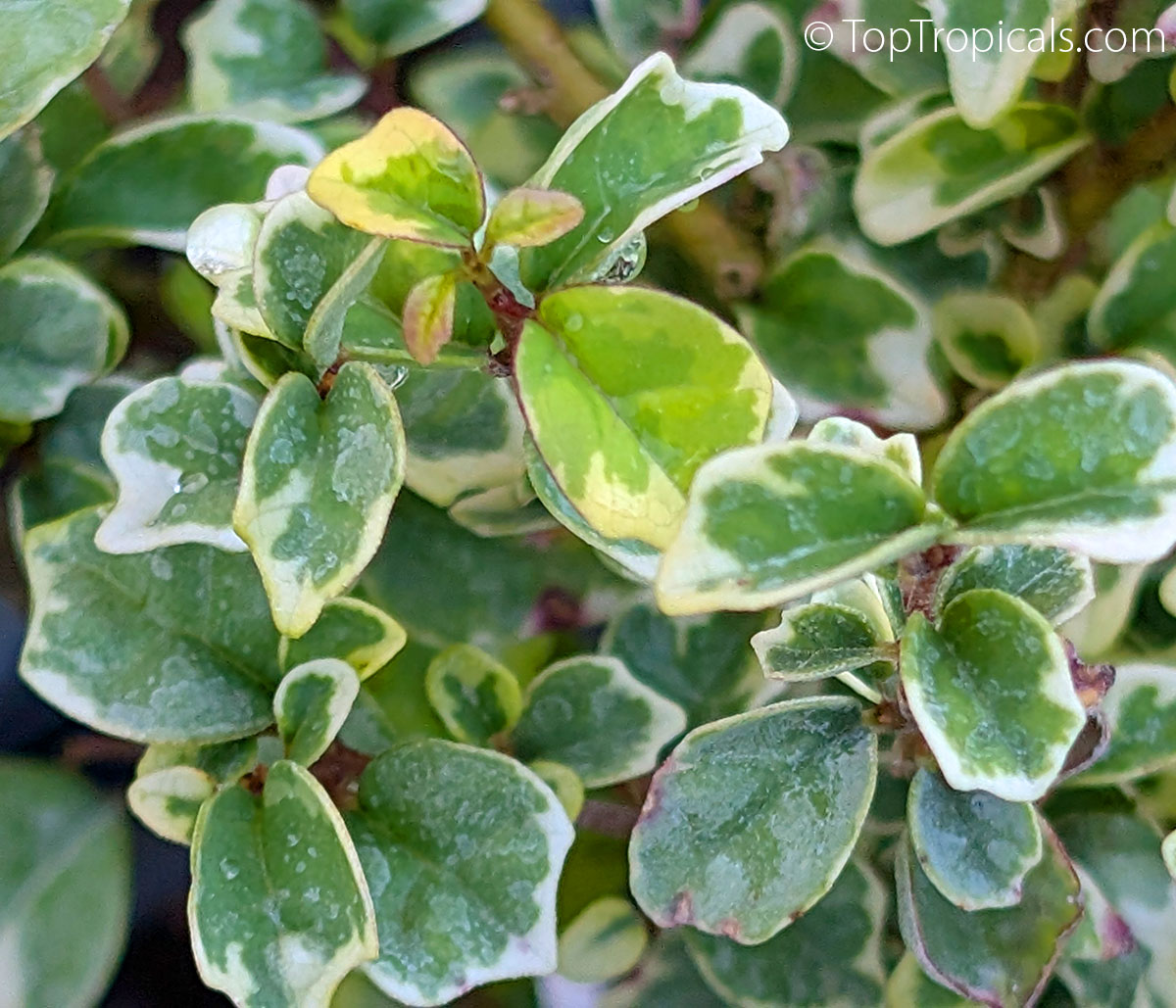
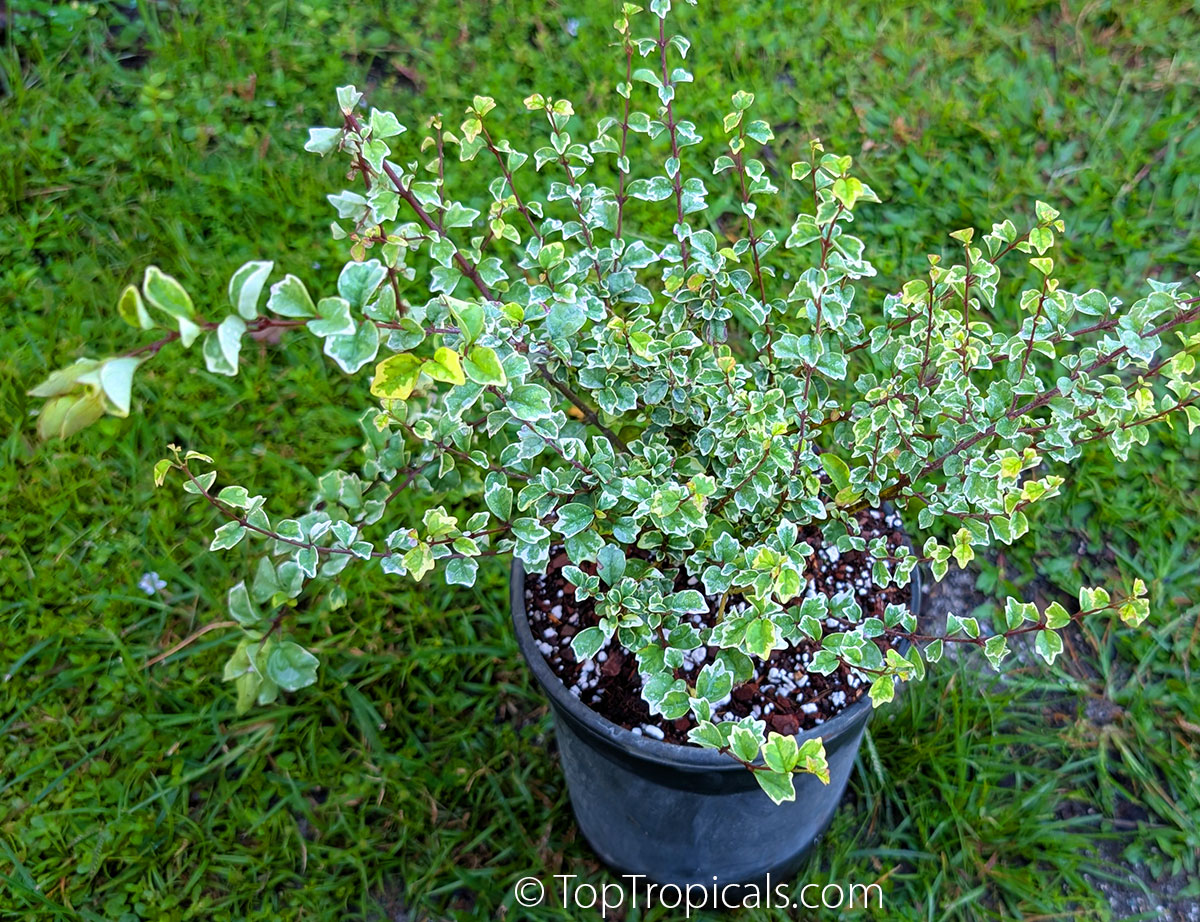
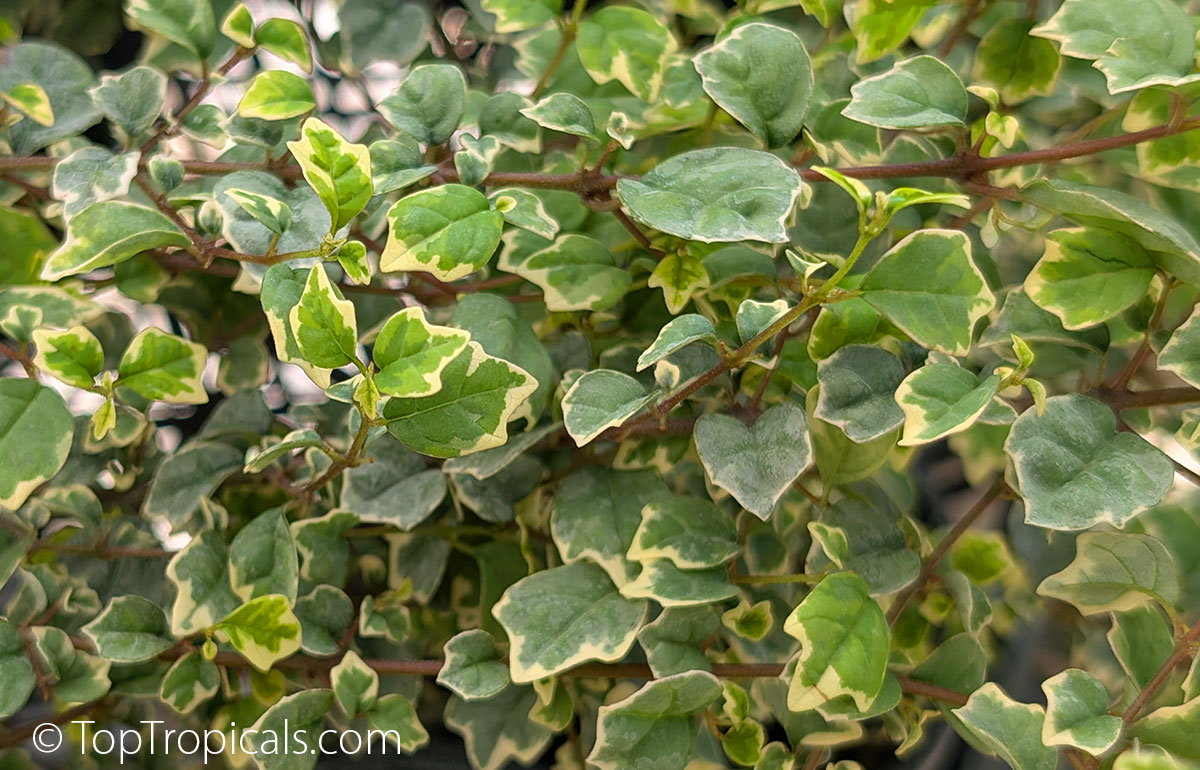
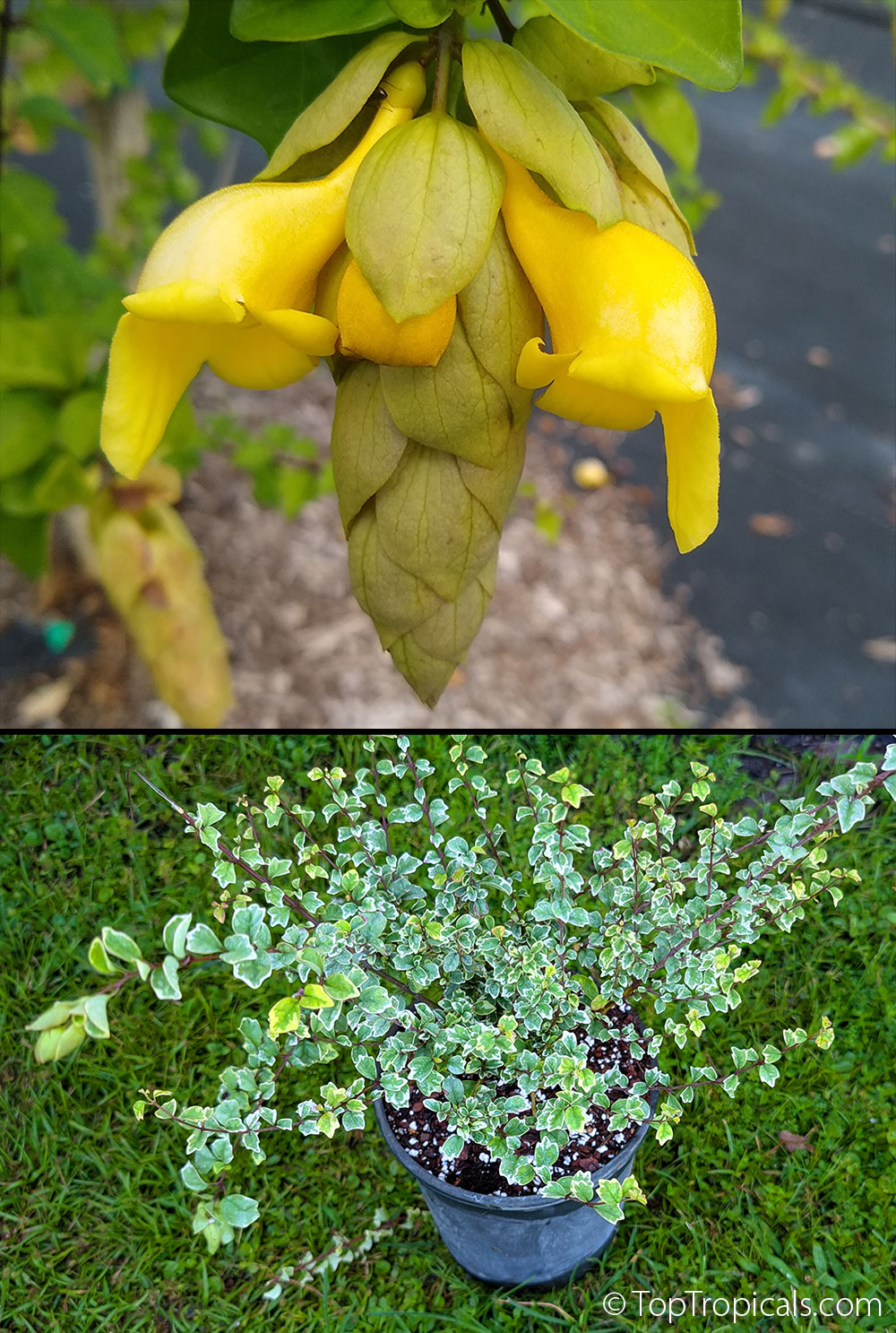
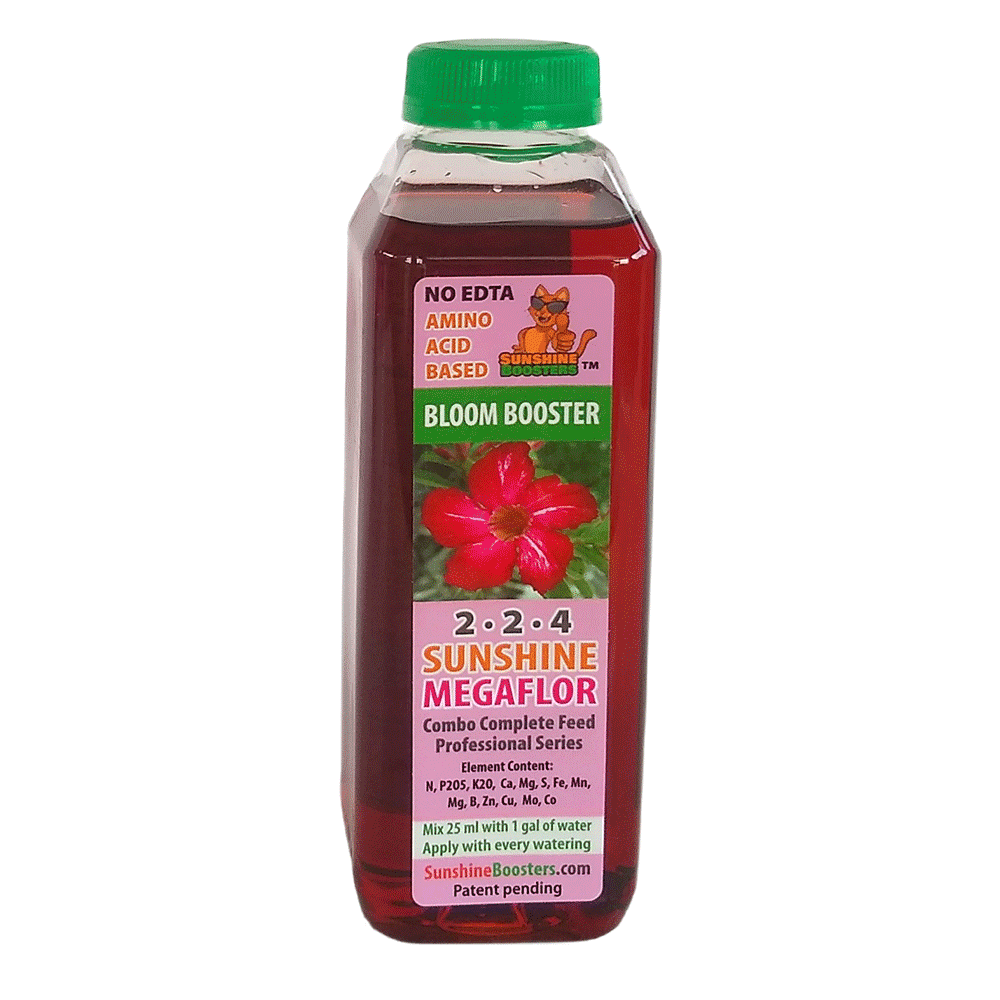 SUNSHINE Megaflor (NPK 2-2-4) - Bloom Booster for every watering. Formulated especially for blooms, to boost flowering, improve flower size and quality, and stimulate pollen development. This is an eco-friendly nutrition booster that can be used for organic gardens. Can be used for daily feeding with every watering. Scientifically-balanced stable formula is organic Amino-acid based and has NO EDTA chelators to eliminate nutrients lockup; it does not affect crop taste. Organic Amino acids greatly enhance stability of all Sunshine boosters and provide excellent absorption of trace elements. Pollinating insects friendly.
SUNSHINE Megaflor (NPK 2-2-4) - Bloom Booster for every watering. Formulated especially for blooms, to boost flowering, improve flower size and quality, and stimulate pollen development. This is an eco-friendly nutrition booster that can be used for organic gardens. Can be used for daily feeding with every watering. Scientifically-balanced stable formula is organic Amino-acid based and has NO EDTA chelators to eliminate nutrients lockup; it does not affect crop taste. Organic Amino acids greatly enhance stability of all Sunshine boosters and provide excellent absorption of trace elements. Pollinating insects friendly.